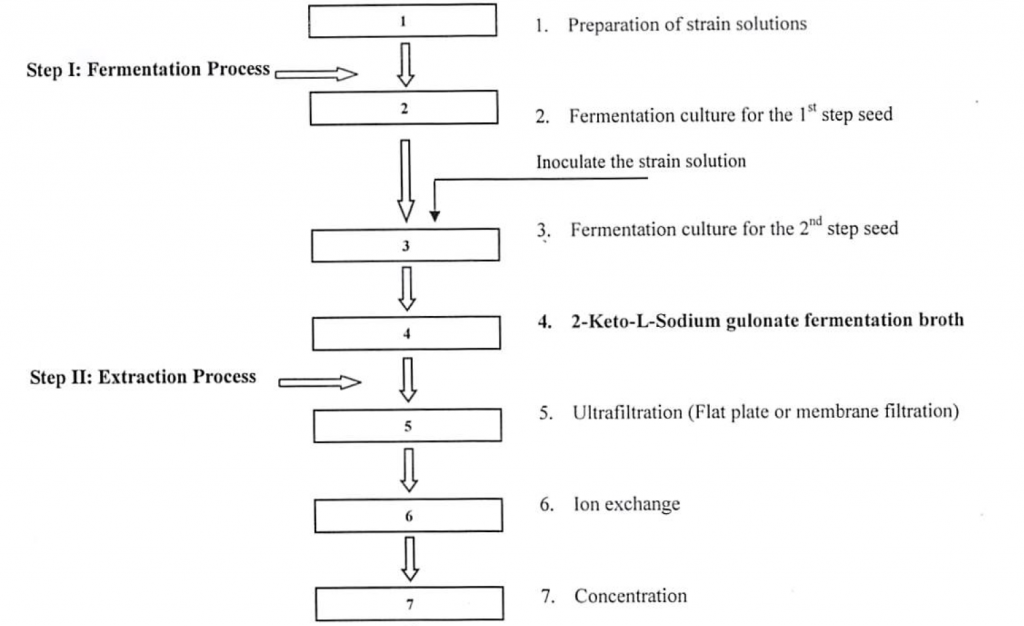What is Xylitol E967?
Xylitol E967 is probably the best known sugar alcohol (sugar polyol). It looks and tastes like sugar but has lower calories and a much smaller glycemic index.
Xylitol E967 is white crystalline powder, a new natural sweetener mostly made from corncob. Chemical manufacturing process is from Xylose (from corncob) among China Xylitol manufacturers, it may be from birch tree bark from abroad manufacturers. It’s sweetness level equals to sugar. Xylitol is a sugar alcohol that can be found in various plants such as vegetables, fruits and wild mushrooms.
Other names for Xylitol
Other names for xylitol like Birch Sugar, E967, 1,2,3,4,5-Pentahydroxypentane, Xylite, CAS Number 87-99-0
Chemical Formula: C5H12O5
Xylitol E967 properties
Appearance
Xylitol E967 is white crystal or crystalized powder.
Taste
Its sweetness taste is equal to cane sugar, cold in taste as it absorb lots of energy when melts.
Solubility
Xylitol E967 dissolve easily in water (the solubility in water around 160g/100ml), and slightly dissolved in ethanol and methanol. When dissolving in water, Xylitol can absorb heat, and has a cool sense in taste. It is a functional sugar alcohol with physiological activity and nutrition value.
Calories
One gram of xylitol contains 2.43 kilocalories (10.2 kilojoules), which is about 63% as much as one gram of sugar, which has 3.87 kcal (16.2 kJ).
Melts
Melting point = 198-205° F (92-96° C)
When xylitol dissolves in your mouth, it actually makes your mouth colder as xylitol melts can absorb many energy. xylitol is the real thing in terms of dropping degrees.
Xylitol and blood sugar
Xylitol E967 looks and tastes like sugar, but has fewer calories and doesn’t raise blood sugar levels.
Glycemic index
Xylitol E967 has fewer calories than sugar. (63% for the same sweetness) It has a very low glycemic index (Only 10 – sugar is 65) and this makes it suitable as part of a diabetic diet.
Metabolism
Only up to 50% of the ingested xylitol is absorbed in the small intestine, the rest passes to the large intestine where it is fermented by the beneficial colonic bacteria to short-chain fatty acids (SCFA) and gases. The unabsorbed xylitol attracts water from the intestinal wall so it can cause diarrhea if consumed in excess. Once absorbed, xylitol can be metabolized and can provide 2.4 kilocalories per gram or it can be converted to glycogen (the glucose store in the liver)
Source: http://www.nutrientsreview.com/carbs/sugar-alcohol-xylitol.html
Xylitol E966 MSDS
Source: https://www.foodsweeteners.com/xylitol-msds
Xylitol E967 Nutritional Information
Xylitol E967 is free from colours, anti-oxidants and preservatives. The nutritional information as follows:
| Nutrient | Per 100 g |
| Protein | 0 g |
| Total Carbohydrates | Min 99.8 g |
| Of Which Sugars | Max 0.2g |
| Of Which Polyos | Min 98.5g |
| Of Which Starch | 0 g |
| Fat | 0 g |
| Saturated Fats | 0 g |
| Fibers | 0 g |
| Cholesterol | 0 mg |
| Calcium | Typically Absent |
| Zinc | Typically Absent |
| Iron | Typically Absent |
| Alcohol | 0 g |
| Gluten | 0 g |
| Shellfish & Shellfish Derivatives | 0 g |
| Nuts and Nuts Derivatives | 0 g |
| Lactose | 0 g |
| Lodine | 0 g |
| Sodium | <0.004 g |
| Vitamins | 0 mg |
| Energy value | 240 kcal / 1000 KJ |
What does Xylitol E967 do?
Xylitol E967 has no Aldehyde or Ketone radicel, no Maillard Browning reaction when get heating, is good to produce different bakery foods.
Xylitol can promote multiplication of Bafidobacterium and beneficial bacteria in the intestines, to improve gastrointestinal function, is a widely used functional additive by its high activity.
Xylitol is not fermented by yeast, can be the inert substrate for microbe, food containing Xylitol can prolong own shelf life.
Xylitol has moisture absorption character, so the refection added in Xylitol will last longer softness than being added the sucrose, always used in making cakes, breads and etc.
Xylitol’s cooling sensation can enhance the taste of food with mint and spearmint.
Xylitol production or Manufacturing process
The production is most often extracted from corncobs among China Xylitol E967 manufacturers.corncobs contain the xylan hemicellulose, which is extracted and hydrolyzed into xylose. Xylose is then hydrogenated into Xylitol through chemical manufacturing process.
Xylitol is made from Xylose and the production flow chart as follows:
| Xylose |
↓
| Decolor |
↓
| Purifying |
↓
| Hydrogenation |
↓
| Decolor |
↓
| Purifying |
↓
| Concentration |
↓
| Crystallization |
↓
| Centrifuge |
↓
| Drying |
↓
| Packing |
↓
| Metal Detector |
Xylitol E967 Market
Xylitol manufacturers in China and brand names
There are several Xylitol manufacturers in China, the well known China manufacturers brand are like Huakang, Longlive, Futaste, Yuxing and Lvjian.
Xylitol Food Grade: Crystals and Powder
Xylitol commonly sold as crystals, and the mesh size like 10-30mesh, 20-80mesh, 30-80mesh crystals. There are also Xylitol power in the market but the uses is little compared with crystals.
Source: https://www.foodsweeteners.com/products/xylitol
Export Market, Price and Quantity

Data from 2015-2017, China Xylitol Export Price and Quantity
China main market and the export quantity as follows:
| Market | Approximate Quantity(KG) |
| US | 6,000,000 |
| Portland | 5,300,000 |
| Turkey | 3,600,000 |
| Russia | 2,500,000 |
| Korea | 1,560,000 |
| Japan | 1,560,000 |
| Netherland | 1,460,000 |
| Brazil | 1,180,000 |
| Italy | 1,000,000 |
| Germany | 900,000 |
| England | 1,000,000 |
| Argentina | 900,000 |
| Hungary | 900,000 |
| Vietnam | 800,000 |
| South Africa | 660,000 |
| Canada | 550,000 |
| Mexico | 500,000 |
| Thailand | 500,000 |
| Austrilia | 300,000 |
| Taiwan | 200,000 |
You’ll see the price is increasing from 2016 to 2017. And the export quantity has increased much from 2015 to 2017.
Where to buy Xylitol E967?
We have business with some of top Xylitol manufacturers, as a supplier focus on sweeteners for years, you can buy Xylitol from us.
Market trend
The global xylitol market is expected to reach USD 1.37 billion by 2025, according to a new report by Grand View Research, Inc.
The change in lifestyle and unhealthy eating habits have led to an increase in the rate of obesity and body mass index (BMI). It has been found that about 18% of the adult population is growing obese with the highest population from the US, owing to unhealthy eating habits and lack of exercise.
According to the report, one driver in the market is increasing concern for a healthy lifestyle. The changing urban lifestyle has driven the acceptance of healthy living, globally. The growing awareness of consumers regarding a healthy lifestyle has urged them to understand the credentials of the product. Every ingredient in a packaged food product is scrutinized before consumption. This helps the consumers to make a conscious choice regarding the consumption of the product that comes with benefits such as natural ingredients and improved formulations.
Further, the report states that one challenge in the market is intense threat of substitutes. Xylitol E967 can be easily replaced with other sugar alcohols such as sorbitol, lactitol, mannitol, erythritol, and maltitol. Sweeteners such as sorbitol are more commonly used as sugar substitutes as they are more cost-effective than xylitol, which justifies the larger market for sorbitol. Apart from sugar alcohols, high-intensity sweeteners such as Sodium saccharin, aspartame, acesulfame potassium (Ace-K), sucralose, neotame, and advantame are extensively used in food products such as confectioneries, soft drinks, powdered drink mixes, canned food, jams and jellies, and dairy products among other food and beverages.
Xylitol E967 Questions
Does Xylitol raise blood sugar?
Xylitol do not raise blood sugar.
Can diabetics eat Xylitol?
The body does not require insulin to metabolize xylitol. For this reason polyols likexylitol produce a lower glycemic response than sucrose or glucose. This has madexylitol a widely used sweetener for the diabetic diet in some countries.
Is xylitol sugar free?
Yes, Xylitol is Xylitol, widely used as a sugar substitute and is sugar-free
Is xylitol better than sugar?
Xylitol Has a Very Low Glycemic Index and Doesn’t Spike Blood Sugar or Insulin. One of the negative effects of added sugar (and high fructose corn syrup), is that it can spike blood sugar and insulin levels. … It can also be considered a weight loss friendly sweetener, since it contains 40% fewer calories than sugar.
Xylitol E967 versus Sorbitol, Stevia (Stevioside), Sucralose
Sweetener category: Xylitol, Sorbitol are sugar alcohol, Stevia is natural sweetener, while Sucralose is artificial sweetener
Sweetness Index: Xylitol 1, Sorbitol 0.55, Stevia (Stevioside) 500, Sucralose 600
Glycemic Index: Xylitol 12, Sorbitol 4, Stevia (Stevioside) and Sucralose both 0.
Price: Xylitol USD4.5-5.0/kg, Sorbitol (Liquid and Powder), Stevia (many grades), Sucralose (USD35/kg-USD40/kg)
Xylitol E967 uses
Xylitol is used for
Xylitol E967 can be used in chewing gum, migraine, soft sweets, jelly, chocolate, and buccal tablets, and featured by throat wetting, tooth cleaning, and caries prevention.
Xylitol E967 can replace cane sugar; due to its un-fermentable property, it is used to beverage & drinks, milk, bread, preserved fruit, biscuit, yoghourt, jam, and eight-treasure porridge; thus the taste is good, and the sweet is durable.
Xylitol E967 can be used for various skin care products and toothpastes as it has the same effect of moistening and improving rough skin as glycerinum.
Xylitol E967 can be the ideal sugar substitute for diabetic; fruit juice, beverage, coffee, coffee syrup, milk, ice cream, bread, candy, and others can be replaced by xylitol; the recommend dosage for adult every day is not more than 40g, and it is in half usage for children.
Xylitol E967 can also be used in sweetener tablets single or together with other sweeteners.
And you can find above foods that contain xylitol in the food label ingredients list.
Xylitol E967 health benefits
Xylitol E967 Benefits Tooth
Like all sugar alcohols Xylitol is not metabolized by bacteria in the mouth and so it does not contribute to tooth decay. In fact clinical trials have shown it to be very beneficial in dental hygiene, it tends to reduce plaque and delay the onset of tooth decay. It appears to be far superior in this regard than other sugar alcohols, such as Sorbital. Test after test have demonstrated it’s effectiveness in reducing caries, bacteria in the gums and plaque.
Source: http://www.ncbi.nlm.nih.gov/pmc/articles/PMC2676064/
Though largely preventable, tooth decay (cavities) is one of the most prevalent chronic diseases among both adults and children, with 1 in 5 Americans reported to have untreated cavities according to the Centers for Disease Control (CDC).
By providing fuel for acid-forming bacteria in the mouth, sugar consumption sets up an ideal acidic condition that promotes decay and demineralization of teeth. Xylitol, conversely, is non-fermentable and does not feed acid-forming oral bacteria. Regular use of xylitol causes cavity-forming bacteria, most notably Streptococcus mutans (S. mutans ), to starve and die off by as much as 73%, decreasing the level of acidic byproducts formed when bacteria ferment sugars.
Considerable research conducted since the early 1970s has established that consuming xylitol products results in reduction in tooth decay rates ranging from 30% up to levels in excess of 80%. Xylitol-sweetened gum even reduces transmission of cavity-causing bacteria from mother to child.
According to newer research, the number of exposures to xylitol throughout the day is more important than the quantity of xylitol. Consider chewing xylitol gum after each meal, sweetening your tea or coffee with xylitol granules and using xylitol toothpaste once or twice a day.
Xylitol E967 Benefits Diabetes
Because xylitol is slowly emptied from the stomach, and only about 50% of it is absorbed, it has negligible effects on blood sugar and insulin secretion. Xylitol has a considerably lower glycemic index (13) when compared with sucrose (65) and glucose (100). It even compares favorably with foods such as legumes and milk.
In a recent animal study examining the antidiabetic potential of xylitol, animals fed xylitol had significantly better glucose tolerance (more stable blood sugar levels), less weight gain and significantly lower food intake (suppressed appetite) than both the sugar and control groups. Data from this study and others confirm that xylitol is an ideal low-calorie sweetener for people with diabetes, metabolic syndrome, obesity, and other metabolic disorders.
Of course, like stevia, xylitol can be used by anyone to help maintain low blood sugar and insulin levels, thereby reducing risk of age-related disease.
Xylitol E967 Side Effects
Is Xylitol bad for you?
Depending on your digestive system, eating xylitol can have a laxative effect. This is purely based on a person’s particular body and how much xylitol it is able to process. However, it is good to know that our bodies naturally produce xylitol. With a normal metabolism it will produce up to fifteen grams of xylitol each day. This indicates that generally the body understands what to do with xylitol.
Xylitol and pregnancy
Xylitol is safe for children and adults, as well as women who are nursing or pregnant.
Can xylitol cause headaches and diarrhea?
If you consume more than 40 grams of xylitol a day, you may experience stomach discomfort and diarrhea
Can Xylitol cause cancer or tumors?
One of the concerns I have heard several times is that xylitol has been found to cause tumors or Cancer.
Some recent studies are beginning to connect certain sugar alcohol directly to tumor growth as well. A May 2016 Swedish study published in the journal Oncotarget made the connection between erythritol and Gioblastoma (GBM), a highly aggressive form of brain cancer that forms from the star-shaped cells that make up the supportive tissue of the brain.
At the same time, studies as far back as the late 70’s (when the substance was first being introduced) tied xylitol to not only gallbladder issues but also tumor growth in mice. Xylitol is manufactured using hydrogenation as well as the use of the carcinogenic heavy metal nickel. Granted, scattered evidence shows that xylitol may prevent tooth decay, but is this really worth the cancer risk?
Is Xylitol E967 safe for children?
In recommended dosage amounts, xylitol is generally considered safe, says the University of Michigan Health System. Excessive doses of xylitol can cause side effects like intestinal gas and diarrhea. However, if children take doses larger than 30 grams daily, it can cause more severe side effects than in adults, warns the University of Pittsburgh Medical Center. Monitor your child’s xylitol intake, and talk with his pediatrician if he displays any side effects.
Source: https://www.livestrong.com/article/264374-does-xylitol-pose-dangers-to-children/
Is Xylitol dangerous to dogs?
Xylitol is often fatal to dogs. According to the ASPCA Animal Poison Control Center, the number of cases of xylitol toxicosis in dogs has significantly increased since the first reports in 2002. Dogs that have eaten foods containing xylitol (greater than 100 milligrams of xylitol consumed per kilogram of bodyweight) have presented with low blood sugar (hypoglycemia), which can be life-threatening. Low blood sugar can result in a loss of coordination, depression, collapse and seizures in as little as 30 minutes. Intake of doses of xylitol (greater than 500 to 1000 mg/kg bodyweight) has been implicated in liver failure in dogs, which can be fatal.
Is Xylitol Harmful to Cats?
According to the American Society for the Prevention of Cruelty to Animals, xylitol is toxic to animals. In cats it can prompt a sudden release of insulin, resulting in low blood sugar, a condition known as hypoglycemia. Signs that your cat may have swallowed a product containing xylitol include a sudden lack of coordination, vomiting, lethargy and, eventually, seizures and possibly coma. Ultimately a cat that eats xylitol may end up with liver failure, resulting in death.
Source: https://pets.thenest.com/xylitol-harmful-cats-4576.html
Xylitol E967 dosage
Xylitol can be the ideal sugar substitute for diabetic; fruit juice, beverage, coffee, milk, ice product, bread, candy, and others can be replaced by xylitol; the recommend usage for adult every day is not more than 40g, and it is in half usage for childre




